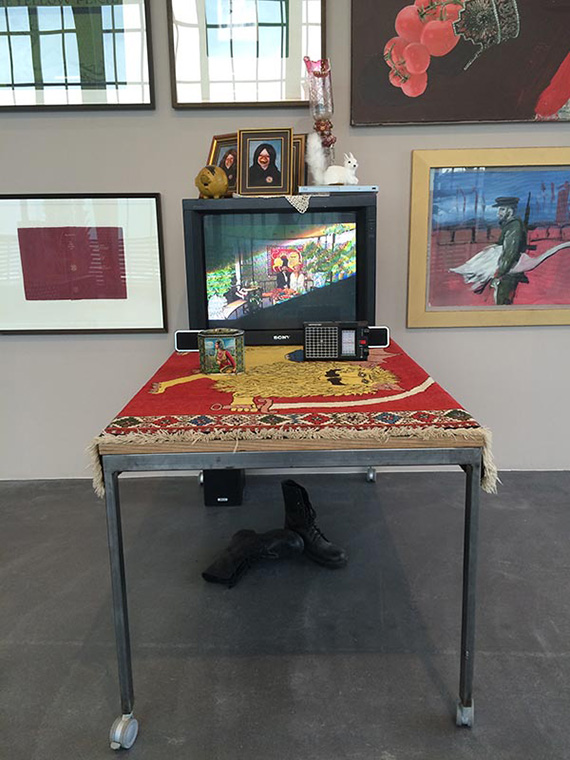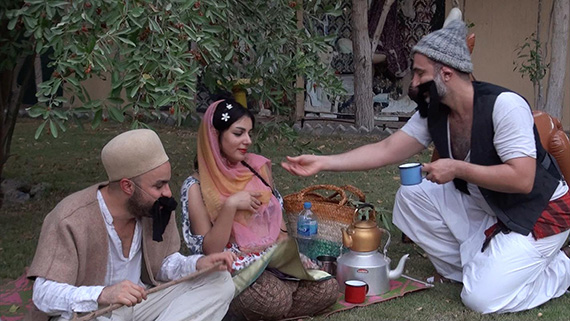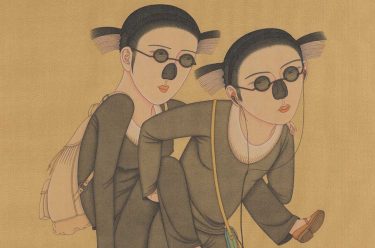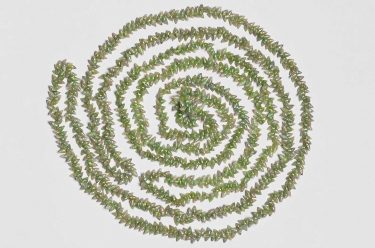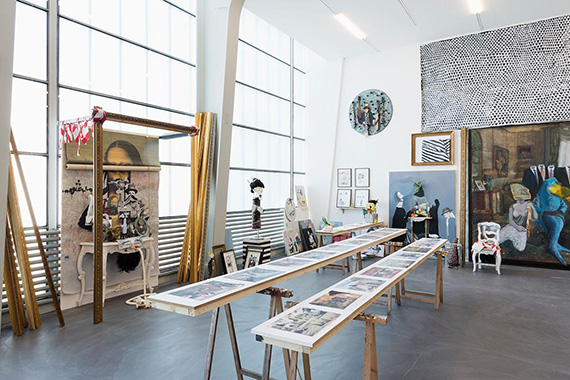
An interview with Ramin Haerizadeh, Rokni Haerizadeh and Hesam Rahmanian
With sharp eyes and wits, three West Asian artists collect multifarious objects and references to create paintings, collage, sculpture and video works. They each have individual practices, as well as collaborating on immersive installations, in which they combine materials to form densely layered ‘wonder-rooms’, where genders bend and authority crumbles. Currently developing a major work for APT8, they spoke with Ellie Buttrose about some of the ideas behind their practice.
Ellie Buttrose (EB) | Why is collaboration integral to your work?
Ramin Haerizadeh, Rokni Haerizadeh and Hesam Rahmanian (RR&H) | We work together constantly, and then we try to share some of that spirit with the people who encounter our exhibitions. The collaboration is not something we intentionally set out to do; it comes naturally out of our way of living together. We wanted to challenge the idea that art is an object, neatly packaged up, and that artists are egoistic seers of wisdom. We have lived together in Dubai since 2009, after a while we realised that this life together has become something of a constant performance in that we’re constantly building something. Not intentionally making an ‘artwork’, but shopping and collecting objects around the city can become part of the process of the works. It’s about finding some way of making art without making art.
That’s why it’s important for us to improvise in our exhibitions, there and then in the exhibition space itself, and we like to bring along with us those people who — whether they know it or not — feed our lives and practice. We’re tired of these definitions of artists and non-artists, art and nonart. We try to make a little space from our life together, and if that is art for you, then great.
EB | Can you describe the Persian theatre tradition of Ta’ziyeh, how its principles are applied in your practice?
RR&H | This notion of a unified ‘Persian culture’ is not something we believe in. There are unending confluences, influences and variations that you can find in the regions of what we call Iran and in fact we are fascinated by the rituals — the dance, the movements — that emerge in these areas, which may perhaps be a response to the geography and ambience of the place that the people live in.
It’s important to say that Ta’ziyeh was never defined as theatre as such. It comes from a day of mourning and is a ritualised, non-scripted improvisation on a story from Shia Islam. Although it does have some elements that are comparable to theatre, like the use of props, cross-dressing, and the way the people distance themselves from the (holy) characters they are playing. You can find connections with other ‘poor street rituals’ around the world, the mummers from England and the passion stories from Europe, for example.
This ritual that unconsciously responds to the ambience of a place is something we try to find in our collaboration, and the self-designed ritual that we follow every day of working together is a Ta’ziyeh of its own. In the Ta’ziyeh, the props that are used are all borrowed from people in the village — the butcher’s boots, or the imam’s coat. This somehow charges the objects for the people watching the Ta’ziyeh, and in their minds they become part of it. We also like the audience to share in our work in a similar way.
EB | Your installations have a comfortable, domestic feeling that invites the viewer in, often created through your incorporation of household objects, as if you are making a home in the gallery, be it in Dubai, Zurich, Brisbane or Boston. Please tell us about your method for creating a sense of ‘home’ regardless of where you are.
RR&H | Happiness is the process of doing something — but that means being and thinking in the present, without intrigue and without ambition: that we can call happiness. When you want to comprehend or understand something, you have to love that thing, bring it into your world and thereby create a relation [to it] that we could call home. We have to then dismantle or at least re describe this word ‘home’. What we call home is somewhere we are temporarily happy. When we’re installing an exhibition in Zurich, it becomes our home for a while. We don’t believe that home is something rooted in a place.
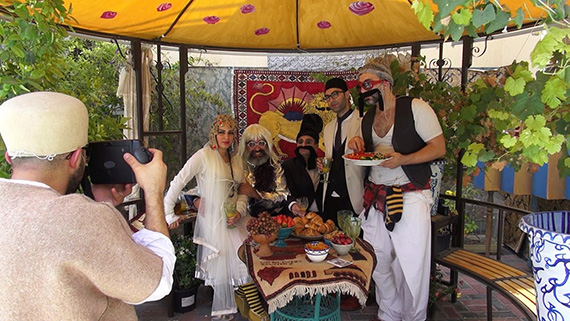
Subscribe to QAGOMA YouTube to go behind-the-scenes / Hear artists tell their stories / Read more about the Australian Collection / Know Brisbane through its Collection
The Asia Pacific Triennial of Contemporary Art (APT) is the Gallery’s flagship exhibition focused on the work of Asia, the Pacific and Australia / 21 November 2015 – 10 April 2016
#QAGOMA
